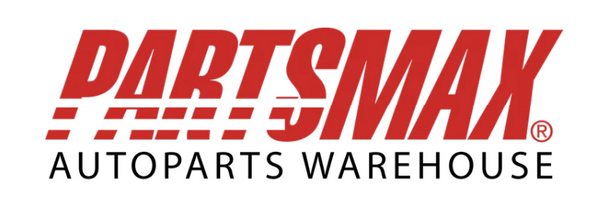Understanding the 10 most common DIY car repair mistakes can save you time, money, and potential safety issues. While the rise of online tutorials and vehicle repair forums has made DIY auto repairs more accessible, inexperienced mechanics often fall into common traps that can lead to costly consequences.
1. Skipping the Research Phase
One of the most critical errors DIY mechanics make is diving into repairs without proper preparation.
Common Research Oversights
- Not obtaining the correct service manual
- Relying solely on YouTube tutorials
- Failing to research common problems specific to their vehicle model
- Not checking Technical Service Bulletins (TSBs)
- Overlooking required special tools
Proper Preparation Steps
- Download factory service manuals
- Join model-specific forums
- Review multiple repair guides
- Document existing conditions
- Photograph components before disassembly
2. Using Incorrect Tools
Using improper tools can damage parts and create safety hazards.
Tool-Related Mistakes
- Using adjustable wrenches instead of proper size combination wrenches
- Incorrect socket sizes leading to bolt head damage
- Missing crucial specialty tools
- Improper torque wrench usage
- Low-quality tool substitutions
Essential Tool Requirements
- Model-specific specialty tools
- Calibrated torque wrench
- Quality socket sets (both metric and standard)
- Proper diagnostic equipment
- Safe lifting and support equipment
3. Improper Torque Specifications
Understanding and following torque specifications is crucial for proper repairs.
Torque-Related Errors
- Over-tightening fasteners
- Under-torquing critical components
- Ignoring torque sequences
- Not using thread lubricant when specified
- Forgetting to reset torque wrench after use
Best Practices
- Always follow manufacturer torque specs
- Use a calibrated torque wrench
- Follow proper torque sequences
- Document all torque settings
- Consider angle-torque requirements
4. Neglecting Safety Procedures
Safety shortcuts can lead to serious injury or death.
Common Safety Violations
- Improper vehicle support
- Working under vehicles supported only by jacks
- Skipping safety equipment usage
- Improper battery disconnection procedures
- Ignoring chemical safety guidelines
Essential Safety Protocols
- Always use jack stands
- Wear appropriate PPE
- Follow proper lifting points
- Ensure proper ventilation
- Maintain clean work area
5. Incorrect Diagnostic Assumptions
Misdiagnosing problems leads to unnecessary repairs and expenses.
Diagnostic Mistakes
- Replacing parts without proper testing
- Ignoring related systems
- Not checking for existing codes
- Misinterpreting diagnostic trouble codes
- Skipping basic tests
Proper Diagnostic Procedures
- Perform complete system scan
- Verify symptoms
- Check related systems
- Test components before replacement
- Document all diagnostic steps

6. Parts Quality Compromises
Choosing incorrect or low-quality parts can lead to premature failures.
Parts Selection Errors
- Using incorrect grade components
- Selecting parts without proper research
- Ignoring OEM specifications
- Buying solely based on price
- Missing critical installation kits
Quality Considerations
- Verify part numbers
- Research manufacturer reputation
- Consider OEM vs. aftermarket options
- Check warranty coverage
- Include all necessary components
7. Electrical System Mistakes
Electrical repairs require specific knowledge and careful procedures.
Common Electrical Errors
- Improper battery disconnection
- Incorrect wire splicing techniques
- Ignoring manufacturer wiring diagrams
- Poor connector maintenance
- Inadequate electrical testing
Electrical Best Practices
- Always disconnect battery properly
- Use appropriate wire gauge
- Follow manufacturer wiring diagrams
- Test circuits thoroughly
- Use proper crimping tools
8. Fluid Management Issues
Improper fluid handling can cause severe engine damage.
Fluid-Related Mistakes
- Incorrect fluid types
- Improper fluid levels
- Poor bleeding procedures
- Cross-contamination
- Inadequate disposal methods
Proper Fluid Procedures
- Check manufacturer specifications
- Use proper filling equipment
- Follow bleeding procedures
- Proper disposal methods
- Regular fluid checks
9. Ignoring Related Systems
Failing to consider interconnected systems can lead to recurring problems.
System Oversight Examples
- Replacing brake pads without checking rotors
- Ignoring timing components during belt replacement
- Missing suspension alignment after component replacement
- Skipping system relearn procedures
- Overlooking sensor calibrations
Comprehensive Repair Approach
- Research related components
- Check manufacturer service bulletins
- Consider system interactions
- Perform necessary calibrations
- Verify complete system operation
10. Poor Documentation
Lack of repair documentation can create future problems.
Documentation Failures
- Not recording torque settings
- Missing parts replacement dates
- Poor maintenance records
- Inadequate repair notes
- Lost warranty information
Documentation Requirements
- Maintain detailed service records
- Record part numbers
- Document torque specifications
- Keep warranty information
- Track maintenance intervals
Conclusion
Understanding and avoiding the 10 most common DIY car repair mistakes can save significant time and money while ensuring safe, reliable repairs. Remember that proper preparation, research, and attention to detail are crucial for successful DIY auto maintenance.
Ready to upgrade your vehicle? Shop our extensive inventory of quality aftermarket auto parts online or visit our Miami warehouse at 3401 NW 73rd ST, where our expert staff is ready to help you find the perfect parts for your needs. Call us at (305) 691-1313 or browse our online catalog today.

